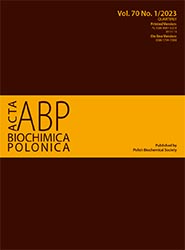Quercetin inhibits the expression of MYC and CYP2E1 and reduces oxidative stress in the myocardium of spontaneously hypertensive rats
Abstract
Oxidative stress is one of the most important pathological processes in chronic heart failure caused by hypertension. These processes involve MYC-regulated mechanisms, including the induction of CYP2E1 as a potent prooxidant factor. In this work, we used qPCR, Western blot analysis, and biochemical markers of oxidative stress to investigate the ability of quercetin to inhibit oxidative stress by modulating MYC expression. We studied spontaneously hypertensive rats (SHRs) in which the onset of cardiac pathology was observed at least at 4 months of age and the development of pathology occurred during life up to 22 months of age. Wistar rats were used as normotensive controls. We observed overexpression of the transcription factor MYC (p=0.0024) in the myocardium of SHRs compared to normotensive controls, and an increased expression of MYC-target gene, CYP2E1, (p=0.0001) in the old SHR group compared to young SHRs. This probably contributed significantly to the development of oxidative stress in the cardiac tissue of old SHRs. We demonstrated that long-term treatment of old SHRs with quercetin resulted in dramatic inhibition of MYC (p=0.0000), and a significant decrease in CYP2E1 (p=0.0001) expression and CYP2E1 protein levels (p=0.0136). This probably contributed significantly to the decrease in lipid peroxidation (p=0.0000). Quercetin was also able to activate antioxidant activity, resulting in a significant improvement in the prooxidant-antioxidant balance in the heart. In turn, the elimination of oxidative stress could contribute to a decrease in blood pressure (p=0.0000) and relative heart weight (p=0.0071) in quercetin-treated old SHRs compared to the untreated old SHR group.
Acta Biochimica Polonica is an OpenAccess quarterly and publishes four issues a year. All contents are distributed under the Creative Commons Attribution-ShareAlike 4.0 International (CC BY 4.0) license. Everybody may use the content following terms: Attribution — You must give appropriate credit, provide a link to the license, and indicate if changes were made. You may do so in any reasonable manner, but not in any way that suggests the licensor endorses you or your use.
Copyright for all published papers © stays with the authors.
Copyright for the journal: © Polish Biochemical Society.


